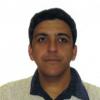Some colleagues have pointed out this tip/topic and we need to clarify for new users:
a cholesky is just a decomposition of a positive definite matrix that has some nice uses in optimization and simulations.
https://en.wikipedia...y_decomposition.
what does it mean a Clearance with log normal distribution CL=tvCL *exp(nCL) that has a BSV of 40 % ? this is not really intuitive and we know that the distribution is not symmetric
suppose you have an output like this:
omegaCL<-0.098784 # variance of CL random effects
iivCL<-100*sqrt(exp(omegaCL)-1) # formula for CV % of log normal
iivCL 32.22233 %
Still this number is hard to interpret what I need to know as a clinician is how much fold increase or decrease of CL I can expect with random variation ?
for the above model: CL=tvCL *exp(nCL)
we can compute where does say 90 % of the population is
> exp(qnorm(c(0.05, 0.95), 0, sqrt(omegaCL)))
[1] 0.596321 1.676949
where does say 50 % of the population is ?
> exp(qnorm(c(0.25, 0.75), 0, sqrt(omegaCL)))
[1] 0.8089715 1.2361375
this tells us that 90 % of patients will be within 0.6-1.68 and that 50 % will be within 0.8-1.24
We can even draw the distribution and show limits of interest.
for other models:
EC50 =tvEC50 + nEC50
or
F = ilogit(F+ nF)
or
V =exp(tvV+nV)
I leave it as an exercise to the user the same concepts apply when in doub use simulations !














